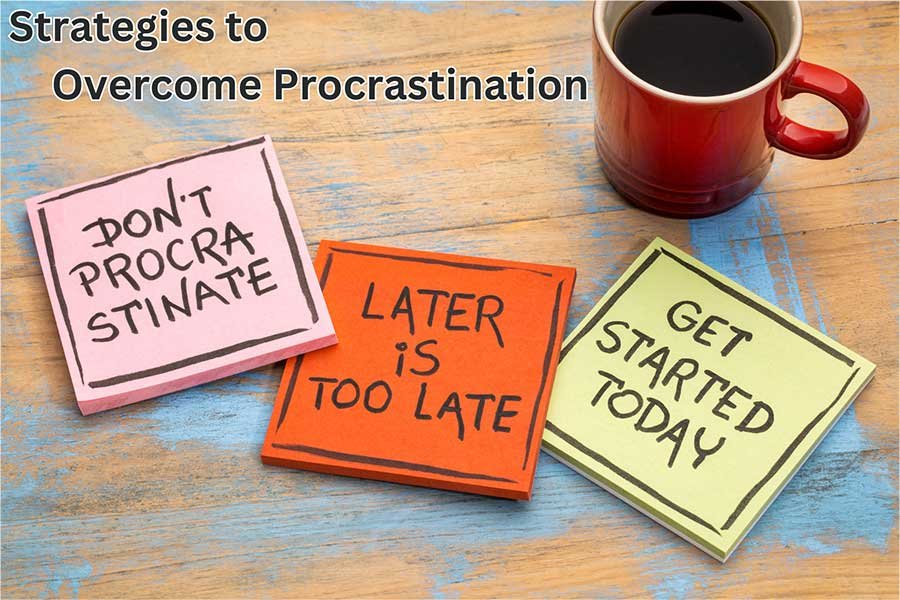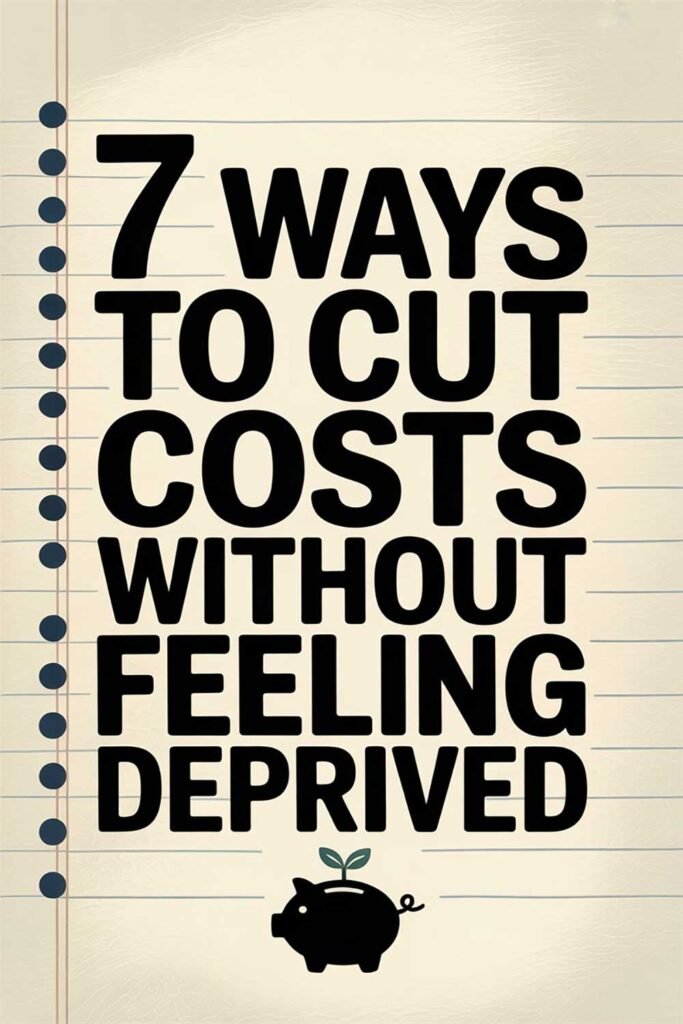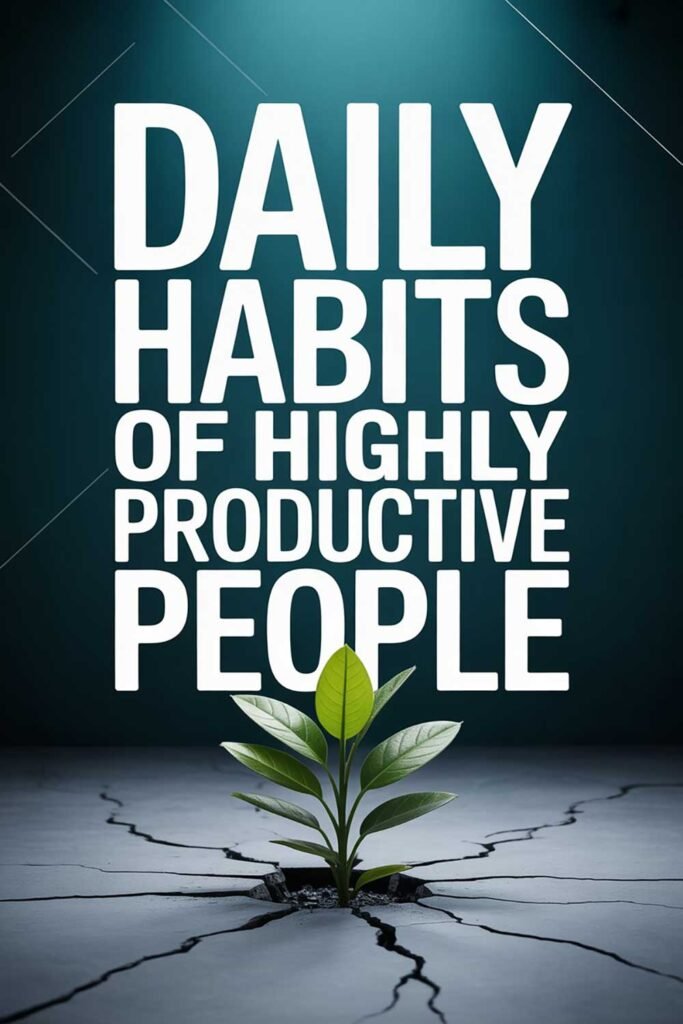
Strategies to Overcome Procrastination in 2025: Taking Action on Your Dreams
We’ve all danced with it, that sly saboteur of dreams: procrastination. It whispers sweet nothings of “later,” promising more time, better inspiration, or easier circumstances, only to leave us drowning in urgency, guilt, and missed opportunities. Whether it’s delaying a big project, postponing a difficult conversation, or putting off personal goals, procrastination isn’t just a time management problem; it’s a complex psychological struggle rooted in fear, overwhelm, and a surprising misunderstanding of how our brains work.
In a world that demands constant adaptation and action, overcoming procrastination is more crucial than ever. It’s the silent barrier that prevents us from realizing our full potential, maintaining our peace of mind, and truly achieving what we set out to do in 2025. The good news is that procrastination is not a moral failing; it’s a habit, and like any habit, it can be unlearned and replaced with proactive strategies that get you moving. Mastering this skill is vital for achieving any significant objective, whether it’s launching home-based business opportunities or simply tackling your daily tasks.
This article will delve into effective strategies to conquer procrastination in 2025, offering practical techniques that address its root causes and empower you to take consistent, inspired action towards your most important goals.
The Procrastination Puzzle: More Than Just Laziness
It’s a common misconception that procrastinators are lazy. In reality, procrastination is often a coping mechanism, a way to deal with challenging emotions associated with a task:
- Fear of Failure: What if I try and it doesn’t work?
- Fear of Success: What if I succeed and things change? (Imposter syndrome often plays a role here, leading to 5 mindset shifts to build self-esteem).
- Perfectionism: The task feels so daunting because it has to be “perfect,” so it’s easier not to start.
- Overwhelm: The task seems too big, unclear, or too difficult.
- Lack of Clarity: Not knowing where to start or what the next step is.
- Low Energy/Motivation: Feeling genuinely drained and lacking the drive to begin.
- Distraction: The siren song of immediate gratification (social media, entertainment) often wins out.
Understanding these underlying reasons is the first step towards choosing the right strategy to counter them.
Strategies to Conquer Procrastination in 2025
These techniques focus on reducing friction, managing emotions, and creating momentum.
1. The 5-Minute Rule (or Two-Minute Rule)
This hack is about making the starting point ridiculously easy.
- The Strategy: Commit to working on the dreaded task for just 5 minutes (or even 2 minutes). Tell yourself you only have to do this small chunk. Often, once you start, you’ll find it easier to continue.
- Why it Works: It overcomes the initial resistance by lowering the activation energy needed to begin. The hardest part is often just starting.
- Real-Life Example: I used to dread starting my taxes. The thought of hours of number-crunching paralyzed me. I committed to just “5 minutes of sorting receipts.” Once I opened the folder and put on some music, those 5 minutes often turned into 30 or 60, and suddenly, the task wasn’t so daunting.
2. Break It Down into Micro-Tasks
Overwhelm is a prime driver of procrastination. Large tasks feel insurmountable.
- The Strategy: Take your big, overwhelming task and break it down into the smallest possible, actionable steps. Each step should be so small that it feels impossible not to do.
- Real-Life Example: Instead of “Write a blog post,” the task became: “Outline introduction,” “Brainstorm 3 main points,” “Write first paragraph of intro.” Each tiny win built momentum. This is a critical principle whether you’re tackling creative work or even figuring out how to fill out a monthly budget worksheet without getting overwhelmed.
3. The Pomodoro Technique
This time management method uses a timer to break down work into focused intervals, traditionally 25 minutes in length, separated by short breaks.
- The Strategy: Set a timer for 25 minutes. Work with intense focus on one task during this time. When the timer rings, take a 5-minute break. After four “Pomodoros,” take a longer break (15-30 minutes).
- Why it Works: It creates urgency, manages distractions by providing defined work periods, and gives your brain regular rest, preventing burnout. This technique aligns with the concept of the best time blocks for maximum focus and energy.
- Real-Life Example: Mark struggled to focus on studying for long periods. Using the Pomodoro Technique, he found he could sustain high-quality study for much longer, knowing a break was always just 25 minutes away.
4. Identify and Address the Root Cause (Emotional Regulation)
Instead of forcing yourself, ask why you’re procrastinating.
- The Strategy: When you feel yourself procrastinating, pause and ask: “What emotion am I avoiding right now? Is it fear, boredom, frustration, or feeling overwhelmed?” Once identified, address the emotion (e.g., take a break, simplify the task, seek help, challenge a negative thought).
- Why it Works: It treats the underlying issue, not just the symptom. Procrastination is often an emotional regulation problem.
- Real-Life Example: Sarah realized her procrastination on a big presentation stemmed from a deep fear of judgment. Once she acknowledged this fear, she worked on breaking the presentation into smaller, less intimidating sections and rehearsing them with a trusted friend, which helped mitigate the fear and allowed her to start.
5. Remove Distractions & Optimize Your Environment
Reduce the temptation to procrastinate by making productive action the easiest choice.
- The Strategy: Turn off phone notifications. Close unnecessary browser tabs. Work in a tidy space. Tell family members or roommates your focus times.
- Why it Works: It minimizes external triggers for procrastination, allowing your willpower to be conserved for the task itself.
- Real-Life Example: David, working on a complex coding project, found himself constantly checking his phone. He started putting his phone in a different room and using a noise-canceling headset. This simple environmental change drastically improved his focus and reduced procrastination.
6. Prioritize Ruthlessly (The Eisenhower Matrix)
When everything feels urgent, it’s easy to procrastinate on what’s truly important.
- The Strategy: Use a prioritization matrix (Urgent/Important) to identify which tasks actually deserve your immediate attention. Focus on “Important, Not Urgent” tasks, as these are often the ones we procrastinate on but yield the most long-term results.
- Why it Works: It provides clarity on what genuinely matters, reducing overwhelm and making it easier to decide what to start. This is a direct application of how to prioritize tasks when everything feels urgent.
- Real-Life Example: Emily had a never-ending to-do list. By categorizing tasks using the Eisenhower Matrix, she stopped procrastinating on her “Important, Not Urgent” tasks (like professional development or strategic planning) because she now understood their long-term impact, even if they didn’t have immediate deadlines.
7. Reward Yourself (Strategically)
Positive reinforcement strengthens desired behaviors.
- The Strategy: Plan a small, immediate reward for completing a dreaded task or a significant chunk of it. Ensure the reward isn’t counterproductive (e.g., don’t reward finishing a workout with a large unhealthy meal).
- Why it Works: It associates the completion of a difficult task with pleasure, creating a positive feedback loop that makes it easier to start next time.
- Real-Life Example: Liam hated doing paperwork. He would promise himself 15 minutes of uninterrupted reading of his favorite novel after completing 30 minutes of invoicing. This small, consistent reward made the dreaded task more palatable. This idea also applies to making your financial journey enjoyable, as seen in how to make your money goals fun and rewarding.
Making Anti-Procrastination Your Default
Overcoming procrastination isn’t about being perfectly productive every day. It’s about developing the awareness to recognize when you’re slipping and having a toolkit of strategies to get yourself back on track. Each time you apply one of these techniques and take action, you strengthen your “procrastination-busting” muscle.
Commit to making 2025 the year you transform procrastination into proactive power. Your dreams, your well-being, and your accomplishments are waiting for you to simply begin.
20 Empowering Quotes on Action and Overcoming Procrastination:
- “The secret of getting ahead is getting started.” – Mark Twain
- “You may delay, but time will not.” – Benjamin Franklin
- “Done is better than perfect.” – Sheryl Sandberg
- “The journey of a thousand miles begins with a single step.” – Lao Tzu
- “Action is the foundational key to all success.” – Pablo Picasso
- “It always seems impossible until it’s done.” – Nelson Mandela
- “Don’t wait. The time will never be just right.” – Napoleon Hill
- “Procrastination is the thief of time.” – Edward Young
- “What you think, you become. What you feel, you attract. What you imagine, you create.” – Buddha (Act to create).
- “The best way out is always through.” – Robert Frost
- “Discipline is the bridge between goals and accomplishment.” – Jim Rohn
- “Don’t count the days, make the days count.” – Muhammad Ali
- “The only limits that exist are the ones you place on yourself.” – Unknown
- “If you want to make an easy job seem hard, just keep putting off doing it.” – Olin Miller
- “Regret for wasted time is more wasted time.” – Mason Cooley
- “Your life does not get better by chance, it gets better by change.” – Jim Rohn (Change your habits).
- “The hardest part is starting. Once you get that out of the way, the rest is easy.” – Unknown
- “Fear is a great motivator, but often it leads to inaction.” – Unknown (Address the root).
- “You don’t have to be great to start, but you have to start to be great.” – Zig Ziglar
- “Opportunity is missed by most people because it is dressed in overalls and looks like work.” – Thomas Edison (Don’t procrastinate on work!).
Picture This
Imagine you have a single, heavy boulder (your dreaded task) sitting squarely in your path. Procrastination is like standing next to it, staring, sighing, and thinking about how hard it will be to move. You might walk around it, find distractions, or even go sit down, all while the boulder remains. Now, picture yourself using these strategies. The 5-Minute Rule is like giving that boulder a tiny, gentle nudge. Breaking it down is like realizing it’s made of smaller, movable stones. The Pomodoro Technique is like setting a timer for quick, focused pushes. Gradually, consistently, those small nudges and focused efforts clear the path, not because the boulder magically disappeared, but because you systematically broke it down and moved it, one piece at a time.
Share This Article
Did this article help you find strategies to overcome procrastination? Share it with friends, family, or on social media to empower others to take action on their dreams in 2025!
Disclaimer
This article is intended for informational purposes only and provides general guidance on overcoming procrastination. Individual results may vary based on effort, personal circumstances, and underlying psychological factors. It is not a substitute for professional advice, diagnosis, or treatment for specific psychological challenges such as ADHD, anxiety, or depression that may contribute to chronic procrastination. If you are experiencing significant or persistent difficulties, please consult with a qualified mental health professional.






